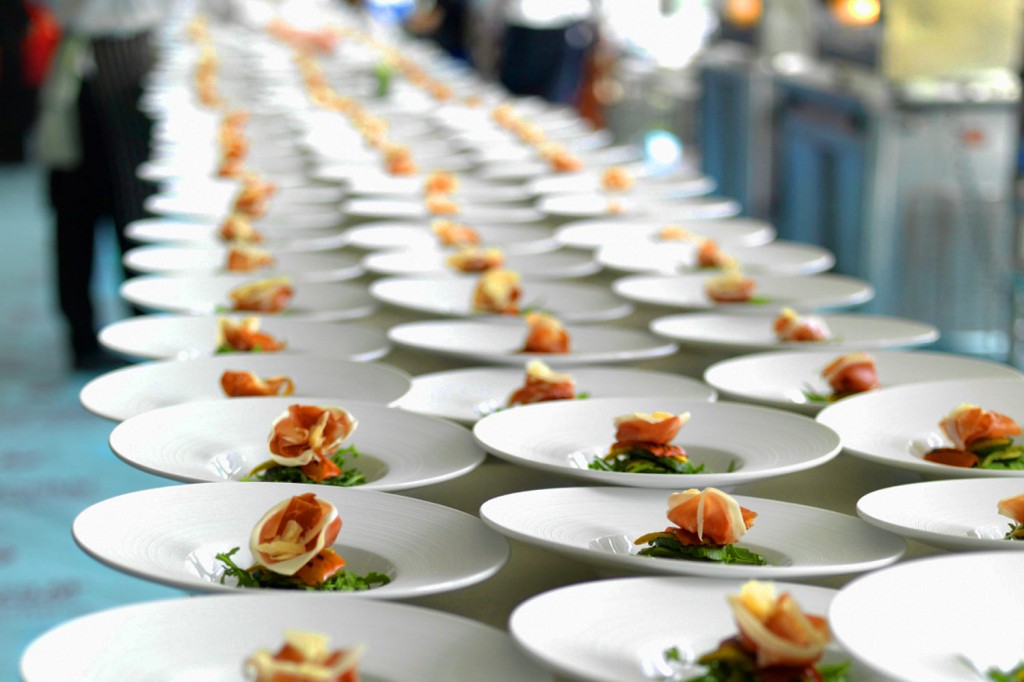Those in the restaurant and catering business understand the frustrations and challenges of succeeding or even failing within their industry. The difficulties and situations a caterer faces really come down to making their customers happy. In the midst of all this hustle and bustle of preparing food, catering an event and satisfying everyone, there's a lot of confusion, stress and tension. Whether there's a conflict between a manager and his or her subordinate, between two or more employees, or even between a catering manager and an event manager, they do happen and from these interactions comes distractions; distractions that lead to unattended safety concerns.
In order for a caterer to be completely safe while on the job, it's important to always stay on your toes and keep the following tips in mind.
It's All about the Customers and Your Employees
No matter what, just remember that everything is about the customer. However, if things get too hectic, people sometimes do things sporadically and when people rush things, safety becomes less and less of a prominent thought. This is why a manager should keep their customers and their employees in mind. That way, safety will be a main priority from start to finish. The last thing a catering manager wants to deal with is a situation that puts an employee or a customer's safety in jeopardy.
Kitchen Safety
While in the kitchen, it's important to stay alert, communicate properly and be calm even during stressful situations. These types of scenarios are oftentimes the ones that lead to injuries and mishaps in the kitchen; cutting injuries, employees bumping into each other or slips caused from spills.
Food Safety
Catering to a large audience means safety and health is priority number one. There's a great amount of regulations involved when preparing food. Health departments visit from time to time, so it's important to always be on top of your game. It's not just the food, but the way it's prepared, disposed of and cooking processes.
Hot food should be kept at a temperature of at least 140 degrees Fahrenheit and cold foods should be kept at 40 or below. There isn't any leeway with these regulations. If hot and cold foods aren't kept at their designated temperatures, then customers are at risk of getting sick. If you have to reheat food, then the temperature has to reach 165 degrees for at least 15 seconds and stay at its designated temperature for at least 2 hours. These are all regulated by the FDA Food Code. If these are followed, then you must toss the food.
Insurance
Insurance will help a catering service if safety issues are to occur, whether it's their fault or not because accidents happen. For instance, worker's compensation from work injuries or fire insurance from a kitchen accident all protect the business from going out of business essentially.
License or Permit
Acquiring a business license and permit is a guarantee that a business understands the processes and safety concerns mentioned above. Although these are a legal requirement, they do express a lot in terms of credibility and safety.
Proper Language
Safety in the catering business primarily comes down to communication, what to say and how to say it. If a kitchen crew communicates effectively and efficiently, then many of the safety concerns won't be concerning at all because everyone's on the same page. The same goes with employees and customers. The thing to keep in mind is the language will be different between employees versus employees and customers. Proper language goes a long way to ensure safety is secure in the catering business.
Yuliya Kim is and author at LeraBlog and a writer for Lutz’s BBQ-catering providers in Columbia and Jefferson City, Mo.









Thanks for sharing the catering business safety tips as catering services for any event make it more memorable and special moment.